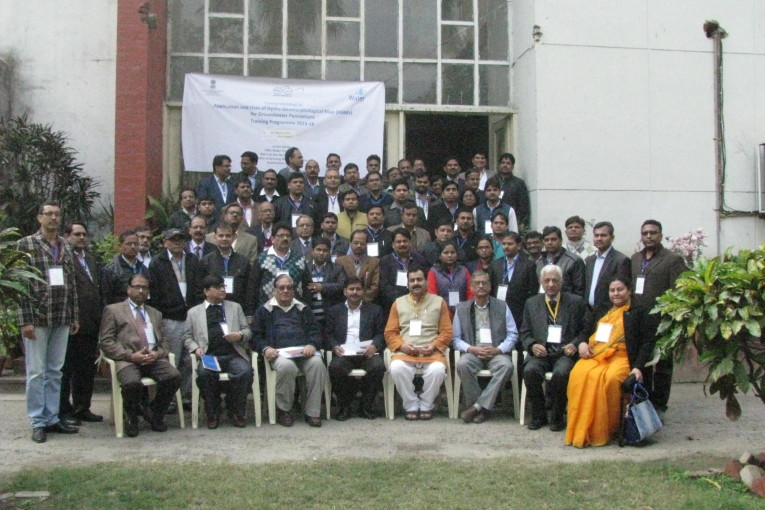
By Shweta Tyagi, Associate Editor – FGR
 A Two day training workshop was held on “Application & Uses of Hydro Geomorphologic Mapping for Ground Water Prospections” on 8th and 9th January, 2016 at The Institution of Engineers (India) River Bank Colony, Lucknow(UP) conducted by India Water Foundation National Key resource Centre ministry of Drinking Water and Sanitation govt. of India for the Staff & Member of State Water and Sanitation Mission (SWSM), Panchayati Raj Institution (PRIs), Public Health Engineering Department (PHED), Communication & Capacity Development Unit (CCDU), NGO’s, Community Based Organization, Masters Trainer Etc.
A Two day training workshop was held on “Application & Uses of Hydro Geomorphologic Mapping for Ground Water Prospections” on 8th and 9th January, 2016 at The Institution of Engineers (India) River Bank Colony, Lucknow(UP) conducted by India Water Foundation National Key resource Centre ministry of Drinking Water and Sanitation govt. of India for the Staff & Member of State Water and Sanitation Mission (SWSM), Panchayati Raj Institution (PRIs), Public Health Engineering Department (PHED), Communication & Capacity Development Unit (CCDU), NGO’s, Community Based Organization, Masters Trainer Etc.
The workshop was inaugurated by Mr. C K Tyagi Chief Engineer(Rural) UP Jal Nigam, Ministry of rural Development, Government of Uttar Pradesh. In his inaugural address he emphasized on the relevance and importance of Hydrogeomorphological mapping and its applications. He also mentioned that state of UP has a lot of ground water , however in some areas like Jhansi its getting more difficult to locate ground water acquifers hence in such cases this training would be relevant. Dr. Arvind Kumar, President India Water Foundation laid emphasis on the convergence of all stakeholders positively impact outcomes and a dire need to have a road map for water security plan.
While welcoming the Chief Guest Mr. Tyagi and speaking on the occasion Dr. Arvind Kumar, President, IWF talked about the need of sharing knowledge between central and state governments, organizations and various other agencies to enable bringing all the other stakeholders on a common knowledge platform and enable forward linkage with Sustainable Development Goal -6, which envisages achieving universal and equitable access to safe and affordable drinking water and to achieve access to adequate and equitable sanitation and hygiene for all. It’s worth mentioning the Meghayla Model here where the convergence of top down and bottoms up approach has brought the various departments to work together for a common outcome. He emphasized the fact that such trainings while enhancing the current engineering solutions would also support and help newer technology adoptions.
sharing knowledge between central and state governments, organizations and various other agencies to enable bringing all the other stakeholders on a common knowledge platform and enable forward linkage with Sustainable Development Goal -6, which envisages achieving universal and equitable access to safe and affordable drinking water and to achieve access to adequate and equitable sanitation and hygiene for all. It’s worth mentioning the Meghayla Model here where the convergence of top down and bottoms up approach has brought the various departments to work together for a common outcome. He emphasized the fact that such trainings while enhancing the current engineering solutions would also support and help newer technology adoptions.



